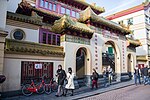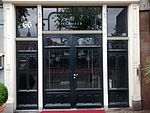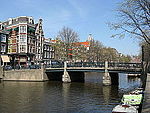Ons' Lieve Heer op Solder
1630 establishments in the Dutch Republic1663 establishments in the Dutch Republic1888 establishments in the NetherlandsChurches in AmsterdamHistoric house museums in the Netherlands ... and 8 more
History museums in the NetherlandsHouses completed in 1630Museums established in 1888Museums in AmsterdamReligious buildings and structures completed in 1630Religious museums in the NetherlandsReligious organizations established in the 1660sRijksmonuments in Amsterdam

Ons' Lieve Heer op Solder (OLHOS; English: Our Lord in the Attic) is a 17th-century canal house, house church, and museum in the city center of Amsterdam, The Netherlands. The Catholic Church was built on the top three floors of the canal house during the 1660s. It is an important example of a "schuilkerk", or "clandestine church" in which Catholics and other religious dissenters from the seventeenth century Dutch Reformed Church, unable to worship in public, held services. The church has been open as a museum since 28 April 1888, and has 85,000 visitors annually.
Excerpt from the Wikipedia article Ons' Lieve Heer op Solder (License: CC BY-SA 3.0, Authors, Images).Ons' Lieve Heer op Solder
Oudezijds Voorburgwal, Amsterdam Centrum
Geographical coordinates (GPS) Address Nearby Places Show on map
Geographical coordinates (GPS)
| Latitude | Longitude |
|---|---|
| N 52.375076 ° | E 4.899363 ° |
Address
Ons' Lieve Heer op Solder
Oudezijds Voorburgwal 40
1012 GE Amsterdam, Centrum
North Holland, Netherlands
Open on Google Maps










